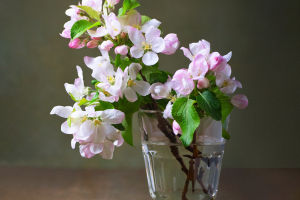Hey Lykkers! Maintaining healthy potted plants, such as succulents, involves crucial steps like re-potting and root pruning to ensure their growth and vitality.
This process not only refreshes the nutrient-rich environment of the soil but also prevents root crowding, allowing for better water absorption and root health.
Why Repot?
Re-potting is necessary when plants outgrow their current pots, which can be noticed when roots start to circle the pot's base or poke out of the drainage holes, indicating that the plant has become root-bound and is no longer able to access the necessary resources for healthy growth. Re-potting gives the plant a fresh substrate rich in essential nutrients that might be depleted from the old soil, providing a revitalized environment that fosters robust development and encourages new root growth
The Role of Root Pruning
Root pruning complements re-potting by removing old, dead roots and making room for new growth, which not only rejuvenates the root system but also encourages the plant to focus its energy on developing healthier, more vigorous roots. This process helps the plant absorb nutrients more effectively and maintain its health, as the removal of decayed or diseased roots minimizes the risk of fungal infections and improves overall root function.
Signs Your Plant Needs Re-potting
Common signs that a plant needs re-potting include roots emerging from the drainage holes, stunted growth, or soil that dries out too quickly, indicating that the plant is outgrowing its current container and struggling to thrive, which can lead to nutrient deficiencies and an overall unhealthy state if not addressed promptly.
Choosing the Right Soil and Pot
Choosing the right soil and pot is crucial for maintaining the health of plants, as selecting the appropriate soil and pot size can make a significant difference in their overall growth and vitality. A slightly larger pot encourages growth by providing ample space for the roots to expand, allowing the plant to access more nutrients and moisture from the soil, which is essential for robust development and flourishing foliage.
Essential Care Tips for Potted Plants
In addition to repotting and root pruning, maintaining the health of small potted plants requires regular watering, proper light conditions, fertilization, and monitoring for pests to ensure they continue to flourish, as each of these care aspects plays a critical role in supporting the plant's growth and preventing issues that can arise from neglect.
Aftercare Following Re-potting
After re-potting care is vital to help the plant recover and adapt to its new environment, as this transitional period can be challenging for the plant after the disturbance of its roots. Keeping the plant in a shaded area for a few days is essential to avoid direct sunlight, which can stress the plant while it is vulnerable and still acclimating to its fresh soil and larger pot.
Maintaining small potted plants requires attention and care, and practices like re-potting and root pruning play a vital role in ensuring their health and longevity, ultimately leading to a thriving indoor garden that brings joy and beauty to space, allowing to enjoy the rewards of efforts in nurturing these green companions.


